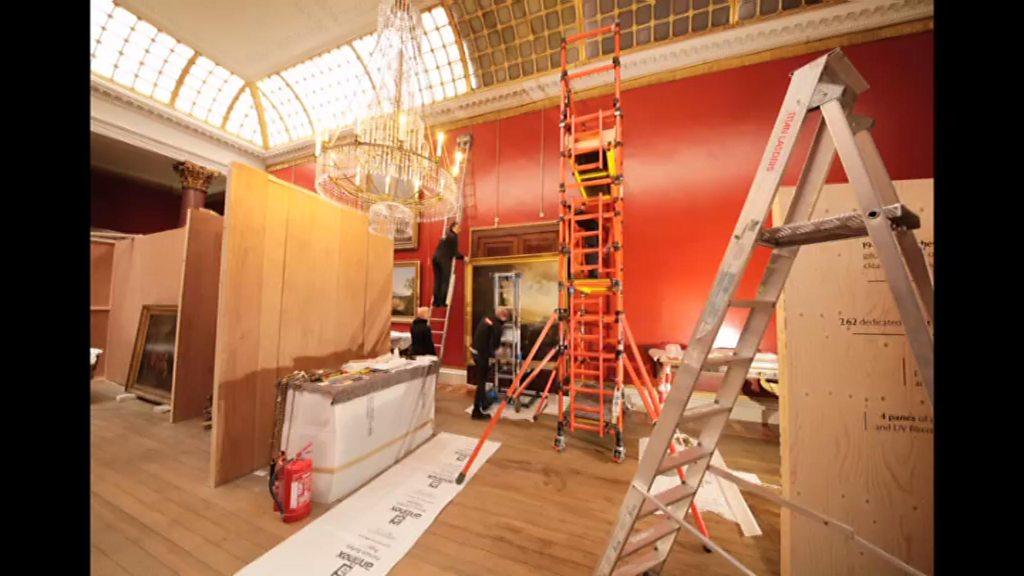Evidence of Roman villas found in survey
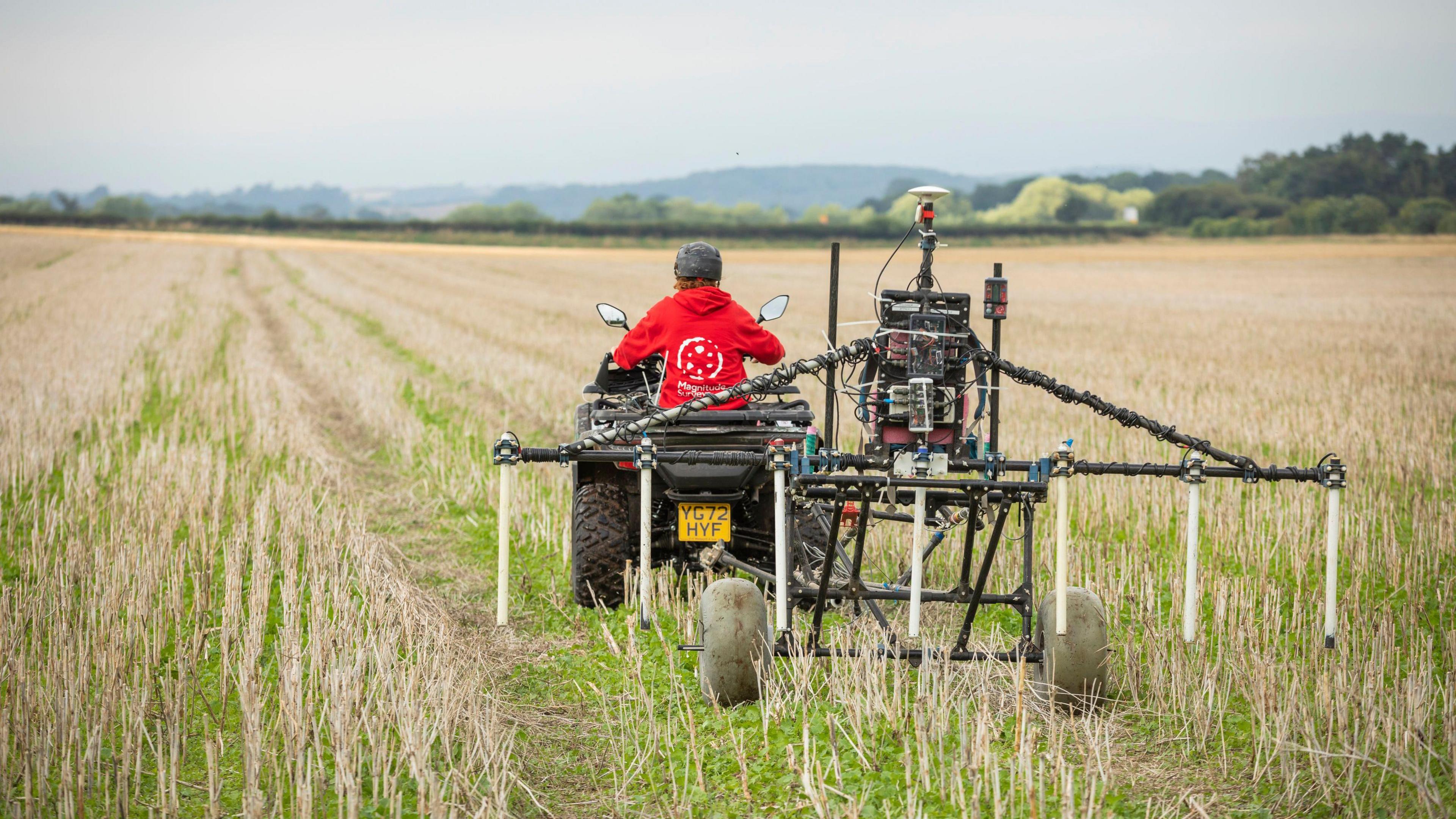
The survey at Attingham Park covered 1,000 hectares (2,471 acres) at the site
- Published
Evidence of two previously unknown Roman villas has been uncovered at a National Trust site in Shropshire.
A large-scale survey across 1,000 hectares (2,471 acres) at Attingham Park near Shrewsbury was carried out for the conservation charity to map the area’s archaeological remains.
The findings will help towards work with tenant farmers on the estate to create new habitats for wildlife while also protecting the archaeological remains, a spokesperson said.
Evidence of several Roman roads, historic small farms and a World War Two airfield were also found in the survey.
Equipment was used which could cover large areas in a relatively short time and record subtle changes in the local magnetic field.
Those results highlighted buried features with different magnetic properties from the surrounding soil.
Attingham Park also covers part of the buried Roman city of Wroxeter which is cared for by English Heritage.
Experts said the survey turned up evidence of what they believed to be two large rural Roman villas and a Roman cemetery on a road leading out of Wroxeter.
There was evidence of at least two construction or occupation phases, they said, with floor plans highlighting internal room layouts and outbuildings.
Only six such other similar villas are known in Shropshire.
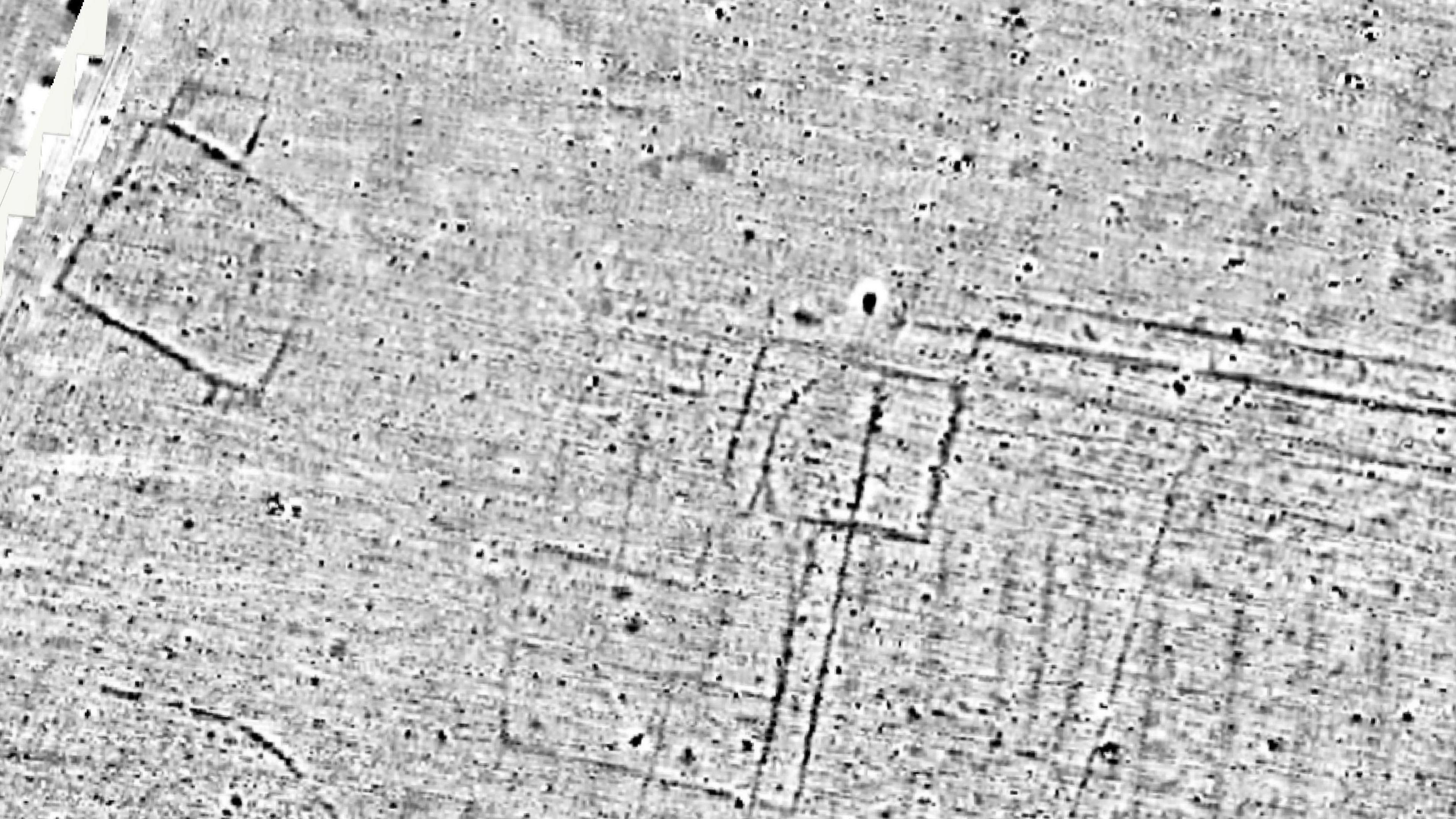
Outlines from the survey revealed evidence of two Roman villas, according to archaeologists
It was likely the villas would have had features typical of such country estates, such as underfloor heating - known as hypocausts - their own bath houses as well as mosaic floors, the trust said.
The survey also detected eight ditched enclosures and remains, possibly Iron Age or Romano-British farmsteads, four of which were previously unknown.
These were likely to have been small farms, possibly supplying food for the nearby city, a spokesperson said.
'Tantalising hints'
The survey also found evidence of several Roman roads to the west of Wroxeter which added to archaeologists' understanding about activity in the area at the time.
Evidence was also found to add to existing knowledge of the World War Two airfield RAF Atcham and its runways, perimeter defences and landscaping.
"We've seen tantalising hints of these remains over the years with evidence showing up in cropmarks, aerial imagery and through small surveys and excavations," said trust archaeologist Janine Young.
"But until now what lies beneath the surface of the ground has never fully been investigated."
She said the Attingham estate had always been known to have high historical and archaeological significance but the survey had provided a "fascinating picture" of the estate’s hidden past.
English Heritage described the survey results as exciting and, along with a further excavation in July, would help build on its knowledge about Wroxeter.
Follow BBC Shropshire on Facebook, external, X, external and Instagram, external. Send your story ideas to: newsonline.westmidlands@bbc.co.uk, external
Related topics
More like this story
- Published27 July 2023
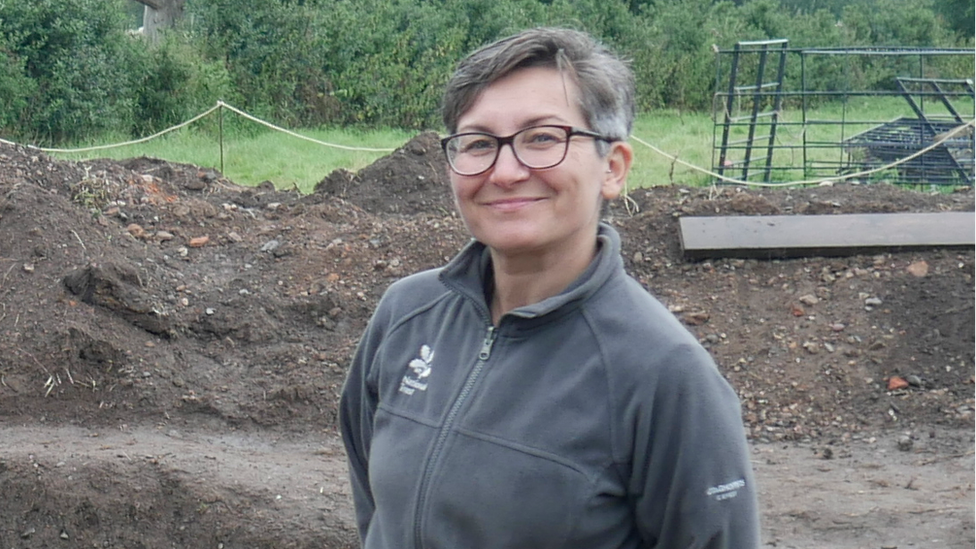
- Published29 February 2024
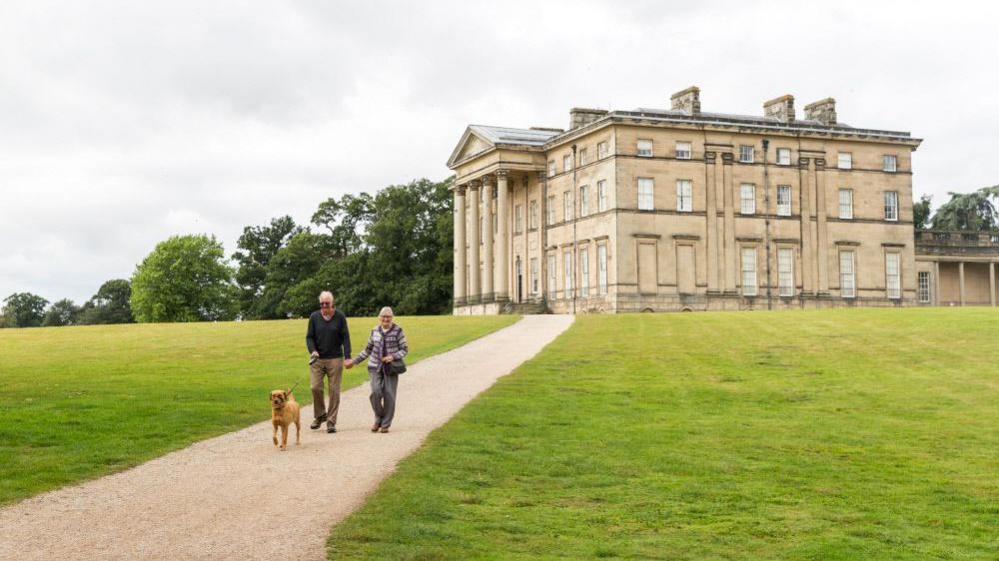
- Published4 March 2016
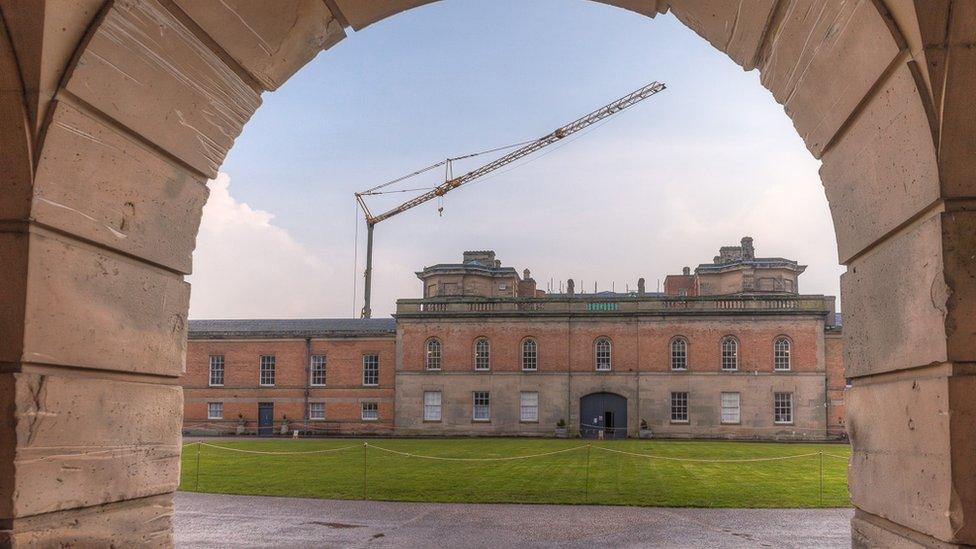
- Published4 March 2016
